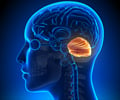The Mayo clinic researchers have claimed the identity of a mechanism that implicated in the origin of various neurological disorders.
An international consortium led by Mayo Clinic researchers have announced the discovery of a mechanism that may help further scientists' understanding of Parkinson's disease, and other neurological disorders.
The researchers have revealed that they studied eight families worldwide, and found a genetic defect that results in profound depression and parkinsonism in a disorder known as Perry syndrome.They agree that this syndrome is rarely reported, but insist that the mechanism implicated in it may help explain the origins of a variety of neurodegenerative disorders, such as Parkinson's and amyotrophic lateral sclerosis diseases, and even common depression and sleep disorders that are also hallmarks of the disorder.
During the study, the researchers found that Perry syndrome patients have mutations in a subunit of the dynactin complex (DCTN1; p150glued), which is essential to the movement of molecular "cargo" inside brain cells, or neurons.
They describe this mutation as a condition wherein the cargo was being driven on a "train" that essentially had faulty brakes.
Given the resemblance between Perry syndrome and many other neurodegenerative diseases, the researchers say that their findings suggest that breakdowns along the cell's interior transportation grid may be a common mechanism underlying neurodegeneration.
"Understanding why distinct neurons are selectively vulnerable to neurodegeneration in different brain disorders is one of the greatest puzzles in neuroscience," Nature Genetics quoted the study's lead investigator, Dr. Matthew J. Farrer, a professor of neuroscience at Mayo Clinic, as saying.
Advertisement
Study's senior author Dr. Zbigniew K. Wszolek, professor of neurology at Mayo Clinic said: "It points us to a unified theory of what is going wrong in many of them."
Advertisement
This protein is known to be crucial to the movement of cargo along the microtubule rails.
"Curiously, the mutations all cluster in the p150glued cytoskeleton-associated protein glycine-rich domain and its 'GKNDG' binding motif. This region acts like a parking brake, so Perry mutations in p150glued mean that this brake is affected. It would be analogous to driving that train with faulty brakes," Dr. Farrer says.
The researchers were surprised to see the similarities between Perry syndrome and other neurodegenerative diseases, and noted that Perry mutations in DCTN1 were physically very close to a mutation previously reported in familial motor neuron disease.
"With the discovery of mutations in Perry syndrome, researchers have a new means to explore the breakdown in the microtubule transport system in each of these diseases," says Dr. Farrer.
"The insides of neurons are very dynamic. Molecules and organelles are constantly being moved to where they are needed, so it makes sense that these disorders, with aging, may be caused by a progressive breakdown in this transport system," the researcher added.
Dr. Wszolek said that understanding Perry syndrome might shed light on both depression and metabolic syndromes.
Source-ANI
PRI/SK








